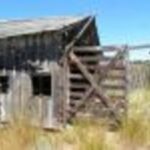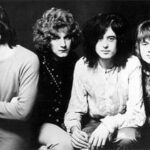Westerns and television was a match made in heaven during the 1950s and 60s. The genre was still popular in theaters, and it was a no-brainer that it would also follow suit on the small screen. In the movies, you could almost always tell the good guys from the bad guys. Those on the side of right wore white hats and fancy, sometimes almost dandified clothing. When guns went off, they created clouds of smoke that today would irritate the EPA. Six-shooters often fired ten shots or more before they needed reloading. During a fight, the actors would rarely lose their hats.
When television became the dominant form of entertainment in America during the 50s, writers began to expand on the idea of creating new types of hero characters for their Western shows. Some of the lead characters dressed in somber clothing, and a couple never carried a pistol, depending instead on a rifle. Story lines began to center on the characters’ private lives instead of just being the old style “shoot-em ups”. One hero even wore a mask, although he had the requisite white hat. Saddle up, pardner, and let’s ride into the world of the television Western.
The Rifleman (ABC, September 30, 1958-April 8, 1963) Chuck Connors portrayed Lucas McCain and Johnny Crawford was his son Mark. What set “Rifleman” apart was that Lucas was a widower raising his son alone on his North Fork, New Mexico ranch. McCain was vaguely referred to as a Civil War veteran, yet the series was set in the mid 1880s, which would have put him barely out of diapers during that war. All that was forgiven, however, because of the great writing that showcased violence is not always the answer, an unusual moral lesson for a Western of that period.
Death Valley Days (Syndicated, March 1, 1952-April 24, 1970) This show, depicting the taming of the West, especially in the area around Death Valley, California, became associated strongly with its main sponsor, “20 Mule Team Borax”, and future U.S. President Ronald Reagan, who hosted and appeared in many of the shows. Quite a few outings in this series were based on actual events. This program actually began on September 30, 1930 as a radio show on NBC’s old Blue Network, which eventually became ABC.
Have Gun, Will Travel (CBS, September 14, 1957-April 20, 1963) Richard Boone, who was an actual descendent of frontiersman Daniel Boone, played Paladin, a former army officer whose hobby was helping people in trouble. Paladin was an unusual Western hero character. He lived in a San Francisco hotel suite, consumed gourmet food, enjoyed opera, and could speak a wide number of languages. His business card said it all for him. It was a plain white card with the drawing of a white knight chess piece, his trademark, over which the words “Have Gun, Will Travel, Wire Paladin, San Francisco” were printed. It took the princely sum of $1,000 to retain his services, quite a large amount in the late 1800s. Writers on the series included “Mission: Impossible” creator Bruce Geller and Gene Roddenberry of “Star Trek” fame.
Maverick (ABC, September 22, 1957-July 8, 1962) Although James Garner is the one name most people associate with this series, it also starred during its run Robert Colbert (who went on to “The Time Tunnel”), Jack Kelly, and future James Bond Roger Moore. “Maverick” was a drama at first, but an injection of broad comedy was introduced to the series and remained to its end. It centered around the male members of a family of card players. A lot of scenes were shot in saloons and gambling halls, making the Maverick clan the first “anti heroes”. Because it sometimes took almost a week to make one show, two crews worked simultaneously, one making a “Bart” (Garner) episode while the other filmed a show with Bret (Kelly), giving a constant mix of programs on alternating weeks.
Wanted: Dead Or Alive (CBS, September 6, 1958-March 29, 1961) Steve McQueen established himself as a star with this show, set in the late 1800s, where he played Josh Randall, a bounty hunter with a heart. He carried an unusual weapon, an 1892 model Winchester carbine, sawed off to fit a special holster. The firearm was affectionately called his “Mare’s Leg”. The opening title segment focused on the rifle, and as McQueen walked across the screen, the camera would pan back as he pulled a “wanted” poster off a board to look at it. When Steve’s movie career started to blossom, he wanted out of this series and deliberately made himself hard to work with so CBS would release him from his contract.
Gunsmoke (CBS, September 10, 1955-March 31, 1975) This program began life as a radio show in 1952. On radio, William Conrad, who later in his TV career starred in “Cannon”, played Marshall Matt Dillon, but for the TV series, set in Dodge City, Kansas in the 1870s, he was deemed too obese to be a commercial draw, so the plum role went to James Arness because John Wayne recommended him. “Gunsmoke” to this day remains the longest running show with continuous characters and holds the same distinction in the realm of Westerns. A young actor by the name of Burt Reynolds portrayed blacksmith Quint Asper between 1962 and 1965.
The Lone Ranger (ABC, September 15, 1949-September 12, 1957) Like Gunsmoke, the Ranger began on radio, on January 30, 1933. This masked man was an actual Texas Ranger, ambushed and left for dead, who was nursed back to health by a Native American named Tonto, who was a childhood friend. The Ranger, in order to hide his real identity, decided to wear a mask, thereby preceding the same trick by superheroes. Much of the music on the show was classical, including the theme, which was actually the finale of Rossini’s William Tell Overture. Clayton Moore was the Lone Ranger for most of the series, and Tonto was played by Jay Silverheels, a genuine Mohawk Indian. The Ranger’s trademark was a silver bullet, and according to legend, his grand nephew Brit Reid became The Green Hornet.
The Cisco Kid (Syndicated, March 6, 1950-March 1, 1956) Cisco started life as a character in an O. Henry short story “The Caballero’s Way” in 1907 and became a radio show on October 2, 1942. The Kid and his sidekick Pancho, much like the Lone Ranger, wandered through the West in search of adventure, with lawmen considering them desperados. This series had the distinction of being filmed twice for each episode, one in black-and-white, one in color, becoming the first color series on TV. Duncan Renaldo was Cisco and Leo Carillo played Pancho.
F Troop (ABC, September 14, 1965-April 6, 1967) Set just after the Civil War, F Troop was a group of inept bumbling soldiers stationed in Fort Courage, a town and fort somewhere out West. Everything was played for laughs, and the cast featured relative newcomers like Ken Berry as Captain Parmenter and Western film veterans Forrest Tucker (Sgt. O’Rourke), Bob Steele (trooper Duffy), and Frank DeKova (Chief Wild Eagle). The local Indians, named the Hekawi, were friendly to the settlers, even helping O’Rourke in his secret business enterprises. Once, when a visiting Apache chief tried to get the Hekawi on the warpath, he ranted that if they had to, they’d fight to the last Apache. When he asked Wild Eagle how he felt about that, the Hekawi replied “Hekawi feel same way—be glad to fight to last Apache”.
The Wild Wild West (CBS, September 17, 1965-April 5, 1969) This Western, set during the presidency of Ulysses S. Grant, featured Robert Conrad, fresh off his stint on “Hawaiian Eye”, as James West, and Ross Martin in the role of Artemus Gordon, the two main agents in the newly-established Secret Service. Show creator Michael Garrison sold CBS on the idea with a simple sentence: “James Bond on horseback. The series, in the Bond tradition, had action, espionage, beautiful women, and multitudes of advanced gadgets somehow managing to lie within the realm of possibility for the era. The locomotive that took the agents’ train across the country was ultimately used as the Hooterville Cannonball on “Petticoat Junction”.
Westerns are all but gone from our television universe, victims of the dwindling amount of locations available to studios as land is being slowly returned to Native tribes in the western United States and those Natives are unwilling to have a noisy, disruptive film crew on their sacred land for months at a time, possibly years if the series is successful. Stunts on horseback are difficult, so stuntmen’s union members are asking ever-increasing amounts of money to perform them. Stringent rules from such organizations as PETA also make Westerns hard to film. It’s highly unlikely that we will see any kind of comeback by Westerns in the near future, but we will always have the glorious Western shows of TV’s past to regale us.



